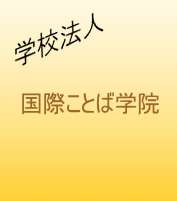 |
|
||||||
 |
|
||||||
|
Shin Jitsuyo Nihongo Shokyu vol. 1&2, New Practical Japanese - Elementary vol. 1&2; Ezoe Note; Shin Jitsuyo Nihongo Kanji 1000, New Practical Japanese Kanji 1000 Intermediate Class @@The goal of the intermediate class is to master natural Japanese through general topics used in various situations. Students who have learned Japanese basic grammar can enhance their own powers of expression and acquire the four basic skills - reading, writing, listening, speaking - properly. Lesson activities include listening, conversation, essay writing, reading and kanji practice for intensive learning; they are expected to memorize about 1000 Kanji characters by the end of the term.
Shin Jitsuyo Nihongo Chukyu vol. 1&2, New Practical Japanese - Intermediate vol. 1&2; Shin Jitsuyo Nihongo Kanji 1000, New Practical Japanese Kanji 1000; exercise books for JLPT and EJU etc. Advanced Class @@The goal of the advanced class is to equip students with the skills necessary when attending later college or university classes. Based on Japanese ability acquired in the intermediate class, students are encouraged to express their thoughts through activities such as presentation, discussion, and debate. Activities to improve students' overall Japanese proficiency include essay writing, making handouts, speech delivery, radio-drama production, project work etc. Computers are occasionally used in classes. @@Furthermore, preparation lessons are given for Nihongo Noryoku Shiken N1-N3 level, Japanese Language Proficiency Test (JLPT), and Nihon Ryugaku Shiken, Examination for Japanese University Admission for International Students (EJU) are given.
Shin Jitsuyo Nihongo Jokyu vol. 1&2, New Pratical Japanese - Advanced 1&2; exercise books for JLPT and EJU; newspapers; magazine articles; novels; TV dramas etc. Kanji Practise @@Students are expected to take KKG's original kanji test twice a motnh to help memorize kanji characters. The test has 22 grades, from pre-10 to meijin, so that students can find theri current level. At the end of the course, students are expected to memorized abaout 2000 kanji characters. Material Examples: Shin Jitsuyo Nihongo Kanji 1000, New Practical Japanese Kanji 1000; Kanji 1000 Plus  |
||||||||||||||||||||||||||||||||